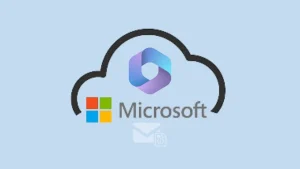Since the large number of remote employees has increased, the need to enable external forwarding in Office 365 has emerged. By default, Microsoft 365 automatically blocks external forwarding to avoid spam. Microsoft reverts back with a text if users set up email forwarding, which is as follows.
“550 5.7.520 Access denied, your organization does not allow external forwarding. Please contact your administrator for further assistance. AS(XXXX)”
This text simply means that your organization does not allow external forwarding. Therefore, users need to follow the manual steps to allow external forwarding of Office 365. This blog will teach users a complete stepwise working procedure for forwarding emails to external users. So, users must read this blog to the end to turn on external forwarding easily and quickly.
Advantages of Enabling External Forwarding in Microsoft 365
There are various benefits to the organizations of allowing the external forwarding of emails in Office 365. To understand its advantages, users can read the points shared below.
- It will help businesses access the organization’s emails on their personal ones if they work remotely.
- Moreover, organizations can easily collaborate with their partners or clients by external forwarding.
- If organizations want to store a backup of their essential emails in another system, external email forwarding will help them.
That is why external email forwarding is necessary for organizations to collaborate better, even if they are working remotely. Let’s go towards understanding the simple steps to allow external forwarding in Office 365.
Also Read: How Do You Check the Mail Forwarding Status in Microsoft 365?
Step-by-step guide to enable external email forwarding in Office 365
Above, we shared why users should allow external forwarding of their Office 365 emails to another. Now, we will know the steps to turn on Microsoft 365’s external email forwarding.
Step 1: Log in with admin credentials to the Microsoft 365 portal. Then, go to the Admin Centers section and click the Exchange to open Exchange Admin Center (EAC).
Step 2: After that, move to the Mail flow tab and tap the Remote Domains option.
Step 3: Now, you need to modify the remote domain setting. To do this, go to the default remote domain setting and click on it to update its settings.
Step 4: Thereafter, tap the Edit button to open the default domain details.
Step 5: Navigate to the Mail flow settings and check the Allow Automatic Forwarding option.
Users can enable external email forwarding in Office 365 on the domain level by following these steps. We have to set external forwarding at the organizational level if your organization does not allow external forwarding.
Step 1: Launch the Microsoft PowerShell on your system.
Step 2: Then, use the below command to install the Exchange Online module if it is not installed.
Install-Module -Name ExchangeOnlineManagement
Step 3: Now, you need to connect to the Exchange online using the below-shared PowerShell script.
$UserCredential = Get-Credential Connect-ExchangeOnline -UserPrincipalName $UserCredential.UserName -ShowProgress $true
Step 4: Run the following command to enable external forwarding in Office 365 (Exchange Online).
Set-RemoteDomain Default -AutoForwardEnabled $true
These PowerShell commands help users to allow external forwarding in Office 365 on an organizational level. Now, we will guide you on how to turn on external forwarding for only selective mailboxes.
How do you set external forwarding for selective mailboxes?
If users want to enable external forwarding in Office 365 or Exchange Online for selective mailboxes, they can do so by following the steps below.
- First, get the external email to which you want to forward your emails.
- Thereafter, you can use the following command to allow external forwarding for only specific mailboxes.
Set-Mailbox -Identity “user@yourdomain.com” -ForwardingSMTPAddress “externaluser@example.com” -DeliverToMailboxAndForward $true
If your purpose behind forwarding emails to external users is to back them up, we advise you to use the Shoviv Office 365 Backup and Restore Tool. Let us share more information on this professional software’s features.
Shoviv Office 365 Backup Tool: An Ideal Tool for Backup
Users can go for the Shoviv Office 365 Backup and Restore Tool to manage their Office 365-related tasks, such as backup, restore, etc. It allows users to back up Office 365 data into numerous file formats, including PST, HTML, MSG, etc. Moreover, this tool will enable users to add various mailboxes simultaneously without any size limitations. Along with the user mailbox, it helps users to back up their archive mailboxes and public folders. Its filter option allows users to include or exclude items based on date and folder-wise criteria.
Moreover, users can quickly restore PST files to their Office 365 accounts using this professional tool. It comes with a user-friendly GUI, so any user can efficiently perform the backup and restore task. Users can also create and run multiple jobs concurrently with a scheduler option to back up data on time. Its scheduler option permits users to back up mailboxes at a specific date and time.
Summing Up
This blog shares a descriptive guide on the manual steps to allow external forwarding in Office 365. Moreover, we understand the advantages of forwarding emails to external users. For an advanced solution to effortlessly back up Office 365 data or restore data to Office 365, users should use the Shoviv Office 365 Backup Tool. This tool is easy to use, even if users do not have a better technical understanding. Users can try its free trial version to check this tool’s efficiency and capability. Its free trial version lets users process the first 50 items per folder into the target.
Popular Articles
- How to Backup and Restore Emails in Webmail? - March 25, 2025
- How to Migrate Outlook to New Computer? - February 15, 2025
- Fix If Outlook Cannot Display the Specific Folder Location - February 1, 2025


